#trilobite tail fossil
Explore tagged Tumblr posts
Photo

Dalmanites Trilobite Tail Fossil – Silurian Wenlock Limestone, Wrens Nest Dudley UK
An authentic Dalmanites trilobite tail fossil (pygidium) preserved on a natural sea floor slab from the Wenlock Limestone Formation, dated to the Wenlockian stage of the Silurian period (~428–423 million years ago). This piece was collected from the famous Wrens Nest site in Dudley, West Midlands, UK, a location celebrated for its exceptional Silurian marine fossils.
Dalmanites is a genus of trilobite belonging to the Order Phacopida, Family Dalmanitidae. It is known for its elegant crescent-shaped pygidium and well-developed segmentation. This specimen displays the tail section of the trilobite, beautifully fossilised and embedded in fine-grained grey limestone.
Fossil Type: Trilobite (extinct marine arthropod)
Genus: Dalmanites
Geological Age: Silurian – Wenlockian Stage
Formation: Wenlock Limestone Formation
Depositional Environment: The Wenlock Limestone was deposited in a warm, shallow tropical marine environment rich in reef-building organisms and benthic invertebrates. Conditions were ideal for the preservation of trilobites, corals, crinoids, brachiopods, and other marine life.
Morphological Features:
Distinct segmented pygidium (tail piece)
Crescent-shaped outline, characteristic of Dalmanites
Preserved on original bedding plane with associated sea floor matrix
Notable:
Genuine fossil from a designated Site of Special Scientific Interest (SSSI)
Classic British trilobite locality with international significance
Ideal for collectors, educational display, or paleontological study
The image shows the exact specimen for sale
Authenticity: All of our fossils are 100% genuine natural specimens and come with a Certificate of Authenticity. The scale cube or rule in the image represents 1cm per square – please view the photo for exact measurements.
This Dalmanites trilobite tail from the ancient Silurian sea floors of Dudley is a beautiful and scientifically valuable specimen that would enhance any fossil collection.
#Dalmanites trilobite#trilobite tail fossil#Wenlock Limestone fossil#Silurian fossil UK#Wrens Nest trilobite#Dudley fossil#sea floor slab fossil#genuine trilobite specimen#Silurian marine fossil#fossil arthropod#UK palaeontology#Wenlockian fossil#collector trilobite
0 notes
Text

It's Trilobite Tuesday! The fossilized remains of Zacanthoides typicalis have been found in Middle Cambrian exposures throughout Utah and Nevada. With its huge eyes and extended genal spines, this species was likely a predator that spent much of its existence patrolling the lower depths of the primeval seas. This specimen is 1.7 in (4.2 cm) in length—including its long tail spine.
361 notes
·
View notes
Text

Tardisia broedeae was a small arthropod recently discovered in the 308-million-year-old Late Carboniferous Mazon Creek fossil beds in Illinois, USA.
Its anatomy has distinctive features of vicissicaudatans (close relatives of the trilobites), but its presence in Mazon Creek makes it by far the youngest known member of this group – indicating a previously-unknown ghost lineage of around 100 million years, and inspiring its name based on the time-travelling TARDIS in Doctor Who.
About 1.5cm long (~0.6"), Tardisia had an oval segmented body ending in a pair of pointed "tail" appendages. It also appears to have been eyeless, although some vicissicaudatans had eyes on their undersides so this might just be an artifact of preservation.
———
NixIllustration.com | Tumblr | Patreon
References:
McCoy, Victoria E., et al. "A possible vicissicaudatan arthropod from the Late Carboniferous Mazon Creek Lagerstätte." Geological Magazine 162 (2025): e3. https://doi.org/10.1017/S001675682400044X
Wikipedia contributors. “Tardisia” Wikipedia, 15 Jan. 2025, https://en.wikipedia.org/wiki/Tardisia
Wikipedia contributors. “Vicissicaudata” Wikipedia, 31 Jan. 2025, https://en.wikipedia.org/wiki/Vicissicaudata
#science illustration#paleontology#paleoart#palaeoblr#tardisia#vicissicaudata#artiopoda#arthropod#invertebrate#art
348 notes
·
View notes
Note
If you detect yourself what would you detect
Horseshoe crabs (Limuluidae sp.) are an ancient form for arthropods to take. Although there are currently only four extant species, but 4 is more than disappearing from the fossil record like trilobites did
The extant ones spawn on full moons during the summer (i forget if it's one specific full moon or if it's the ones during the summer) and on beaches along their range
Their sharp tails are more often used for turning upright if flipped by currents, and is not a good place to hold them. If one needs to be relocated to reduce the chance of it getting injured, it's advised to carry by the rim of the frontmost portion of the shell (i forget if it's solely by the rim or by the rim and supporting the body)

As you can see, they are also capable of hosting sessile organisms such as barnacles
27 notes
·
View notes
Text
List of all SDV and SDV:E (Stardew Valley: Expanded) Giftable Items
Horseradish
Daffodil
Leek
Dandelion
Parsnip
Cave Carrot
Coconut
Cactus
Banana
Sap
Large Egg
Egg
Milk
Large Milk
Green Bean
Cauliflower
Potato
Garlic
Kale
Rhubarb
Melon
Tomato
Morsel
Blueberry
Fiddlehead Fern
Hot Pepper
Wheat
Radish
Red Cabbage
Starfruit
Corn
Rice
Eggplant
Artichoke
Pumpkin
Bokchoy
Yam
Chanterelle
Cranberry
Holly
Beets
Ostrich Egg
Salmonberry
Amouranth
Pale Ale
Hops
Void Egg
Mayonnaise
Duck Mayonnaise
Void Mayonnaise
Clay
Copper Bar
Silver Bar
Gold Bar
Iridium Bar
Refined Quartz
Honey
Pickles
Jam
Beer
Wine
Juice
Clam
Poppy
Copper Ore
Silver Ore
Coal
Gold Ore
Iridium Ore
Wood
Stone
Nautilus Shell
Coral
Summer Shell
Spice Berry
Sea Urchin
Grape
Spring Onion
Strawberry
Sweet Pea
Common Mushroom
Wild Plum
Hazelnut
Blackberry
Winter Root
Crystal Fruit
Snow Yam
Sweet Gem Berry
Crocus
Red Mushroom
Sunflower
Purple Mushroom
Cheese
Goat Cheese
Cloth
Truffle
Truffle Oil
Coffee Bean
Goat Milk
Large Goat Milk
Wool
Duck Egg
Duck Feather
Caviar
Lucky Rabbit’s Foot
Aged Roe
Ancient Fruit
Mead
Tulip
Summer Spangle
Fairy Rose
Blue Jazz
Apple
Green Tea
Apricot
Orange
Peach
Pomegranate
Cherry
Bug Meat
Hardwood
Maple Syrup
Oak Resin
Pine Tar
Slime
Bat Wing
Rusty Blade
Swirl Stone
Solar Essence
Void Essence
Void Pebble
Void Shard
Void Soul
Fiber
Battery
Dinosaur Mayonnaise
Roe
Squid Ink
Tea Leaves
Ginger
Taro Root
Pineapple
Mango
Cinder Shard
Magma Cap
Bone Fragment
Radioactive Ore
Radioactive Bar
Ancient Fiber
Bearberry
Conch
Dried Sand Dollar
Ferngill Primrose
Golden Ocean Flower
Goldenrod
Green Mushroom
Four-Leaf Clover
Monster Fruit
Monster Mushroom
Mushroom Colony
Poison Mushroom
Red Baneberry
Salal Berry
Slime Berry
Rafflesia
Sports Drink
Stamina Capsule
Thistle
Void Root
Winter Star Ross
Dewdrop Berry
Aged Blue Moon Wine
Blue Moon Wine
Aegis Elixir
Armor Elixir
Barbarian Elixir
Gravity Elixir
Haste Exilir
Hero Elixir
Lightning Elixir
Pufferfish
Anchovy
Tuna
Sardine
Bream
Largemouth Bass
Smallmouth Bass
Rainbow Trout
Salmon
Walleye
Perch
Carp
Catfish
Pike
Sunfish
Red Snapper
Herring
Eel
Octopus
Red Mullet
Squid
Seaweed
Green Algae
Seacucumber
Super Seacucumber
Ghost Carp
White Algae
Stone Fish
Crimsonfish
Angler
Icepip
Lava Eel
Legend
Sandfish
Scorpion Carp
Flounder
Midnight Carp
Mutant Carp
Sturgeon
Tiger Trout
Bullhead
Tilapia
Chub
Dorado
Albacore
Shad
Lingcod
Halibut
Lobster
Crayfish
Crab
Cockle
Mussel
Shrimp
Snail
Periwinkle
Oyster
Woodskip
Glacierfish
Void Salmon
Slimejack
Midnight Squid
Spookfish
Blobfish
Stingray
Lionfish
Blue Discus
Baby Lunaloo
Bonefish
Bull Trout
Butterfish
Clownfish
Daggerfish
Dulse Seaweed
Frog
Gemfish
Goldenfish
Grass Carp
King Salmon
Kittyfish
Lunaloo
Meteor Carp
Minnow
Puppyfish
Radioactive Bass
Razor Trout
Seahorse
Sea Sponge
Shiny Lunaloo
Snatcher Worm
Starfish
Torpedo Trout
Undeadfish
Void Eel
Water Grub
Dwarf Scroll 1
Dwarf Scroll 2
Dwarf Scroll 3
Dwarf Scroll 4
Chipped Amphora
Arrowhead
Ancient Doll
Elvish Jewelry
Chewing Stick
Ornamental Fan
Dinosaur Egg
Rare Disc
Ancient Sword
Rusty Spoon
Rusty Spur
Rusty Cog
Chicken Statue
Ancient Seed
Prehistoric Tool
Dried Starfish
Anchor
Glass Shards
Bone Flute
Prehistoric Handaxe
Dwarvish Helm
Dwarf Gadget
Ancient Drum
Golden Mask
Golden Relic
Strange Doll
Strange Doll
Prehistoric Scapula
Prehistoric Tibia
Prehistoric Skull
Skeletal Hand
Prehistoric Rib
Prehistoric Vertebrae
Skeletal Tail
Nautilus Shell
Amphibian Fossil
Palm Fossil
Trilobite
Emerald
Aquamarine
Ruby
Amethyst
Topaz
Jade
Diamond
Prismatic Shard
Quartz
Fire Quartz
Frozen Tear
Earth Crystal
Alamite
Bixite
Baryite
Aerinite
Calcite
Dolomite
Esperite
Fluorapatite
Geminite
Helvite
Jamborite
Jagoite
Kyanite
Lunarite
Malachite
Nepunite
Lemon Stone
Nekoite
Orpiment
Petrified Slime
Thunder Egg
Pyrite
Ocean Stone
Ghost Crystal
Tiger’s Eye
Jasper
Opal
Fire Opal
Celestine
Marble
Sandstone
Granite
Basalt
Limestone
Soapstone
Hematite
Mudstone
Obsidian
Slate
Fairy Stone
Star Shards
Fried Egg
Omelet
Salad
Cheese Cauliflower
Baked Fish
Parsnip Soup
Vegetable Medley
Complete Breakfast
Fried Calimari
Strange Bun
Lucky Lunch
Fried Mushrooms
Pizza
Bean Hotpot
Glazed Yams
Carp Surprise
Hashbrowns
Pancakes
Salmon Dinner
Fish Taco
Crispy Bass
Pepper Poppers
Bread
Tom Kha Soup
Trout Soup
Chocolate Cake
Pink Cake
Rhubarb Pie
Cookies
Spaghetti
Spicy Eel
Sashimi
Maki Roll
Tortilla
Red Plate
Eggplant Parmesan
Rice Pudding
Ice Cream
Bluberry Tart
Autumn’s Bounty
Pumpkin Soup
Super Meal
Cranberry Sauce
Stuffing
Farmer’s Lunch
Survival Burger
Dish’O’The Sea
Miner’s Treat
Roots Platter
Triple Shot Espresso
Seafoam Pudding
Algae Soup
Pale Broth
Plum Pudding
Artichoke Dip
Stir Fry
Roasted Hazelnuts
Pumpkin Pie
Radish Salad
Fruit Salad
Blackberry Cobbler
Cranberry Candy
Bruschetta
Coleslaw
Fiddlehead Risotto
Poppyseed Muffin
Chowder
Fish Stew
Escargot
Lobster Bisque
Maple Bar
Crab Cakes
Shrimp Cocktail
Ginger Ale
Banana Pudding
Mango Sticky Rice
Poi
Tropical Curry
Squid Ink Ravioli
Mushroom Berry Rice
Big Bark Burger
Flower Cookie
Frog Legs
Glazed Butterfish
Grampleton Orange Chicken
Mixed Berry Pie
Baked Berry Oatmeal
Void Delight
Void Salmon Sushi
#Mistakes have likely been made and I will not be fixing them so just reply to the post with any corrections#sdv#stardew#stardew valley#sdv:e#sdve#stardew expanded#stardew valley expanded#giftable items#sdv items#sdv gifts#sdv gifting#long post
7 notes
·
View notes
Text
You've seen its counterpart, now get ready for:
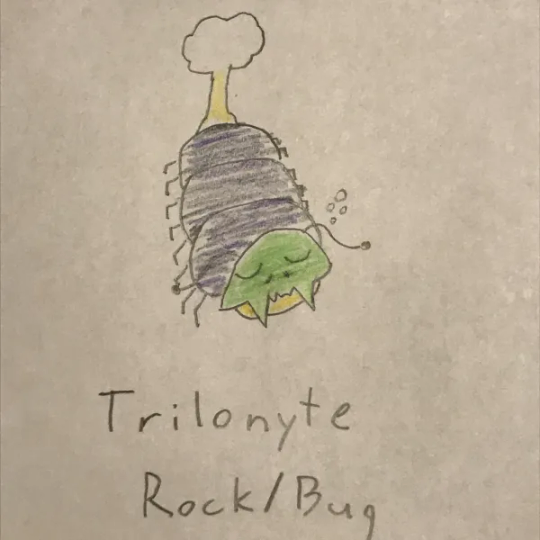
Trilonyte - The Drowsy Pokémon! (#70)
Type: Rock/Bug Ability: Groggy Height: 1' 8" / 0.5 m Weight: 15.4 lbs / 7.0 kg
Trilonyte is a Fossil Pokémon, obtained by first retrieving and then reviving the Molt Fossil at the Clefton Museum of Natural History (but be careful - Trilonyte is exclusive to Pokémon Steel)! With what is known today about its behaviors, many scientists consider it to be a minor miracle that any Pokémon of this species survived to adulthood. Trilonyte sleeps a whopping 20 hours a day, and spends the rest of its time wishing it could be asleep. It is often seen using the protrusion on its tail as a pillow and dozing by the riverbank and relaxing under its soft, plush shell. It relies mostly on Bivoutel to protect it, though they hardly fair much better, and are usually asleep right beside them.
Both Trilonyte and its evolution have the Signature Ability Groggy. Every turn, a Pokémon with Groggy has a 1/12 chance of gaining the Sleep status. Groggy cannot trigger while the Pokémon is already asleep, but can while it has a different status effect.
If it manages to survive long enough, it become Bivoutel. The corresponding fossil Pokémon exclusive to Pokémon Flint is Ikivac, which you can read about here.
For a behind-the-scenes look at this Pokémon, read below!
I think that this Pokémon is by and far the one I have struggled the most with designing so far. I knew I had to do an isotelus Pokémon (for the state fossil of Ohio), but much like how I was reticent to make a dunkleoestus Pokémon because of Relicanth and Dracovish/Arctovish, I was also feeling wary because it felt like Kabuto and Wimpod had the market cornered with trilobite-esque Pokémon. But, after a lot of work, I'm fairly happy with the result.
The spark of inspiration was twofold. The first part was this weird thought I had where I realized that the overlapping layers of a trilobite's shell kind of look like a sleeping bag. I actually designed Bivoutel first because of this idea, though it ended up not looking like a base stage Fossil Pokémon. The second was that there are two already-existing Pokémon with really good stats that have horrible Abilities: Archeops, a Fossil Pokémon, and Golisopod. I figured that if I'm going to make a guy that looks similar to Wimpod anyway, I might as well go whole hog. You can only get so wet, right? So, with Archen's ability lowering your stats and Wimpod's swapping you out involuntarily, I completed the trio of undesirable Pokémon effects by just having him fall asleep. And like those two, don't worry, its evolution is going to have, like... a 580 BST.
There's not too much to say about their design, other than I struggled with it for a weird amount of time. It's hard to tell, but they're supposed to have a striped pattern on their shell, like a security blanket. Maybe I should have gone for a baby blue color, like Linus's blanket? Oh well. Either way, just for fun, here's the drafting process for this little guy. You can see in the bottom of the first picture, I toyed with the idea of giving them a long, dress-like shell to more accurately reflect a blanket, and even a horn that looks like a nightcap at one point. In the second, you can see my first go at his pillow tail, which went less well than I would have wanted.
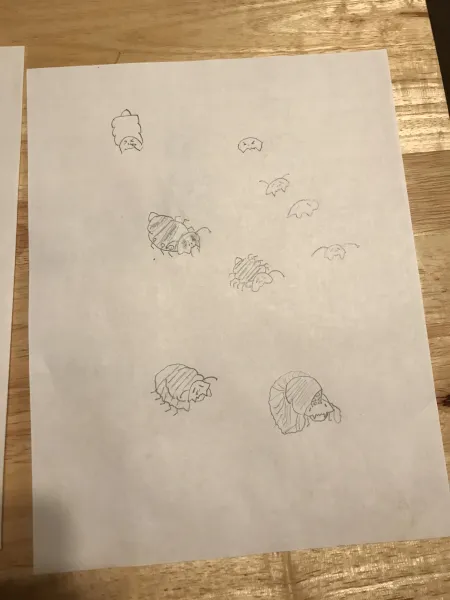
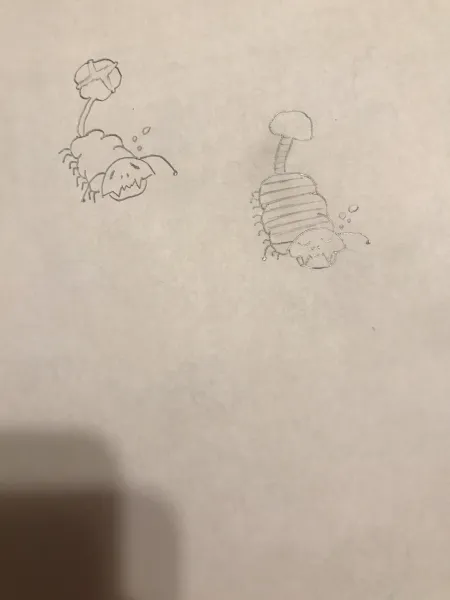
2 notes
·
View notes
Text
You are climbing, forever, down the walls of the pit.
You do not know why. You do not know what lies at the bottom. But you have been climbing since you were a little child, because you do not want them to catch you.
The walls of the pit vary. Sometimes they are coarse sandstone, that crumbles under your fingers, holding onto the strange fossils protruding from its bulk - trilobites and ammonites and dinosaurs and other, stranger things, long since forgotten. Sometimes they are cold iron, with lights and steaming vents and screens playing static, and you climb down rusting metal ladders or the sharp heads of bolts. Sometimes they are the inside of a mall, futuristic and sleek, displaying products that seem to change when you look back at them and fluttering televisions playing ads that you're sure can't be right, and you jump from floor to floor or take whirring escalators, never straying too far from that yawning vastness that leads farther down.
Your flashlight flickers sometimes. But it has not run out yet.
Your bare hands and feet are raw and bloody, and your arms and legs ache from climbing so far, for so long. You eat what you can scrounge, and when there is nothing you go hungry. It cannot be carried with you. You sleep in snatches, in little alcoves or on small platforms, jumping awake at the smallest noise.
For you never know when they will find you at last.
You do not know who they are. You have never seen them. But you know for certain they are right on your tail. You've met other people, sometimes, climbing, and they all agree that they're coming, climbing down after you faster than you could go unless you simply let yourself drop. They want to hurt you. They want to get you back. They want to take you back there and do horrible things to you. And the only way that you can escape them is by outrunning them, by staying ahead, by making it down first.
And so you climb, down dangling strands of slippery algae where fish peer from behind glass walls and starfish and sand fleas struggle in the slime around you; down cheery places with heavy, colorful plastic not-rocks that come off the fake stone in your hand, where distant music plays from somewhere and you can't shake the feeling that you're being watched and mocked; down a spiralling staircase clinging to the brick walls that never seems to be as sturdy as it should be, beneath the cruel gaze of tall, looming paintings staring down and judging you. They will never catch you. You swear it to yourself, again and again and again. They will never catch you.
3 notes
·
View notes
Text
Well, it's not that birds appeared after the extinction of dinosaurs. Well before then, when dinosaurs were still very much around, a particular lineage of light-bodied, feathered dinosaurs took flight and gave rise to the first birds (sequences of fossils neatly show bird traits appear little by little). For many millions of years, birds and non-bird dinosaurs lived side by side, and changed adapting to their environments at the same time.
Birds conserved the traits of dinosaurs (warm blood, four-chambered heart, upright legs, air sacs in their bones, wishbones, feathers) which make them so similar to e.g. Velociraptor, and acquired new traits of their own (short tail, keeled breastbone, toothless beak). Eventually the asteroid came, dinosaurs went extinct, and the only exception was the lineage of birds, or perhaps a few lineages of birds. Large organisms fare worse during times of crisis, so it's not surprising that small birds survived where giant dinosaurs didn't (the same is true for mammals).
Similar is the situation for sharks: many kinds of sharks have been around since far before the time of dinosaurs. Some, when conditions allow it, grow to massive size; but when those conditions change, or disaster strikes, the giant forms are the first to fall, and their smaller kin survives. It's never quite the same, but they can be very similar indeed. And so it is for many other groups.
Even humans are no exception: the first species we could call human, which were quite smaller than us, diversified into a variety of forms (the bulky herbivore Paranthropus, the tall and lanky Homo ergaster, the 'island dwarf' Homo floresiensis). None of them developed completely new organs, but they all tweaked what they had to adapt to various conditions, and as it happened, only one species, ours, survived to the present. Of course if you go further up human ancestry then you have to see greater changes, and each came about in different circumstances, but every time it's just a matter of modifying what already exists -- nothing appears out of scratch.
(As for trilobites and cockroaches, their similarities are quite shallow. Both are arthropods, so both have the general traits of that group -- segmented shelled body, hinged legs, compound eyes, etc. -- but apart from that, they only resemble each other in overall shape. At any rate, the first insects, including the ancestors of cockroaches, already existed before trilobites went extinct, as well.)
Now, it is possible for very similar forms to appear over and over: the standard examples are the Australian "copies" of mammals elsewhere (marsupial 'mice', marsupial 'moles', marsupial 'flying squirrels', etc.) and open-sea marine hunters (shark, ichthyosaur, tuna, dolphin). This occurs when organisms with a more-or-less similar body structure adapt independently to the same lifestyle, in a similar environment. It's simply a matter of similar conditions leading to similar results, but it's never quite full repetition -- a dolphin is still not a shark. (I've written some more on the matter of convergent evolution here).
Favorite bird genre has got to be 'that's literally just a dinosaur'

Groove-Billed Ani

Hoatzin

Pheasant Coucal
112K notes
·
View notes
Text
Paradox Pokemon (But Just the Dinosaurs)
I think it’s fair to say that at this point in my life I have fallen out of interest in actually playing Pokemon games. The last one I finished was Pokemon Sun & Moon, which I thought was excellent! I didn’t finish Sword & Shield, and I think that’s mostly because the game is full of guardrails and reminders that are designed to keep the game playable for a four year old who may be learning to read, and in the process plays very slowly compared to how I want to play games. I do know enough about the game to think that most of the criticism of Pokemon as a franchise is at the very least, weird, if not outright bad faith nonsense.
Despite all this though, I love looking at Pokemon. I love watching streamers play it, and I love watching strategy reports from the real competitive scene. I am, for lack of a better word, a spectator. A fan.
This last generation of Scarlet & Violet, has brought with it something that I’ve wanted for so long, and never really formally been able to express. Thanks to time travel shenanigans – oh, spoilers, I guess? – this is the generation where we get to see Pokemon’s dinosaurs.
Pokemon has had ‘dinosaur Pokemon’ before, of course. I don’t just mean the perhaps-famous seeming dinosaur Pokemon like Tyranitar and Tyrantrum (as if Tyrantrum is famous to anyone who isn’t extremely into this franchise). I mean that back in G1, we had four pokemon in the Pokedex that represented prehistoric Pokemon, Pokemon from a bygone era and the ways they existed differentiated them from the rest of the Pokedex. As with many things in G1 — like gender and forking development — this involved a cool idea executed on roughly, that didn’t get expanded on until later.
Much later in this case.
Fossil Pokemon aren’t the same as the Paradox Pokemon. The Fossil Pokemon are unified by how you get them; you find an object in the game (usually only one of a set) and then you later on share it with a scientist who brings it back to life and now you have that in your team. The Fossil Pokemon are definitely designed to invoke ancient animals – Kabutops and Omastar are both trying to look like animals from our own ancient history, like the trilobite and prehistoric giant nautiluses.
Paradox Pokemon have a unified mechanical framework. They all have the ability Protosynthesis, which is an interesting thing (because Protosynthesis is pretty strong), and a really annoying thing (because it’s a lot more like the Paradox Pokemon don’t have any abilities at all, and therefore look like they’re not Pokemon any more).
It does create a coherent worldbuilding note; not one I have dug into at length, but which implies that the world they’re from is unified in the way that Pokemon in it relate. It’s probably a time when the biology of Pokemon and – oh no I’m doing it, aren’t I? I’m doing that thing where I imagine that Pokemon, which aren’t animals – follow the rules of animals!
Anyway, so right, Pokemon Dinosaurs. They are Dinosaurs to Pokemon; they are prehistoric, they are rudimentary, rougher and somehow unnatural and strange compared to the ones you’re familiar with. They get to show you the way that some Pokemon lineages have changed over time; Jigglypuff and Scream Tail are both related by a thread of music and sound powers, but Scream Tail is really fast, compared to Jigglypuff’s middling stats.
What’s even stranger there is that Wigglytuff is only evolved with a stone from the moon.
I think these Pokemon are cool. I think that dinosaurs are cool. And while Pokemon aren’t animals and don’t follow those rules for evolution and genetic distribution, they are absolutely an interesting thread for these things to walk down. Originally, I was pretty distmissive of the entire genre, because they were just, y’know, high-end, high-power, hard-to-acquire Pokemon for the competitive scene with high stats that weren’t going to be useful to the gameplay experience I wound up at.
Gouging Fire here is the one that tipped me over though. It’s a tiger. It’s a styracosaurus. It’s a fire elemental. It’s got the jaw of a bug and its’s got the face of a kamen rider. It is an absolutely amazing mix of components, a beast the likes of which any Pokemon could already be, but which here, contrasts itself with Entei (a Pokemon for whom I have no strong feelings), and the other Paradox Pokemon!
A brachiosaur! A therapsid!
The names are out-of-type too. They have names that read like, well, to be nice about it, someone translated their names into modern words, rather than tried to prononuce the word. It’s the way you’d hear Native Americans being named ‘translation of the actual sounds of your name’ and that’s why these days people think that Native Americans have names that are English.
Slither Wing, too! Slither Wing is a Pokemon that is derived from – but implied to be the progenitor too, but, y’know, the games were made in real world time scale, don’t worry about it – a flying bug, Volcarona. The way that it represents what starts as a flying bug and turns into a grounded bug is a pretty cool way to represent the way that traits evolved over time in the –
Wait, no, now I’m doing it again! They’re not animals!
But they feel like they’re evolving.
I like Paradox Pokemon. I wish they were a little more varied with their abilities. I wish they could show up in the normal timeline of the game instead of being a late-game thing for post-game material. If you could run around with these things early on I bet I’d be more interested in playing through the game and playing around with these cool little dinosaur gremlin monsters. I was always going to be a mark for ‘Pokemon explores prehistoric Pokemon’ but I wasn’t expecting them to take a big swing, and give me so many at once.
Oh there are also Pokemon from the future but I think most of them are boring and suck.
Check it out on PRESS.exe to see it with images and links!
1 note
·
View note
Photo

RARE Dalmanites sp Fossil Trilobite Tail – Much Wenlock Limestone, Silurian – Hobbs Quarry, Gloucestershire, UK – Genuine + COA!
RARE: Dalmanites sp Fossil Trilobite Tail – Much Wenlock Limestone, Silurian – Hobbs Quarry, Gloucestershire, UK
📜 From the Prestigious Alice Purnell Collection! 📜
✅ 100% Genuine Specimen – Comes with a Certificate of Authenticity (COA)
📏 Scale Rule / Cube = 1cm (Full sizing details in photos)
📸 You will receive the exact fossil shown in the images
🦠 Fossil Overview:
This is a RARE and exceptionally well-preserved Dalmanites sp Fossil Trilobite Tail, dating back to the Silurian Period (~420 million years ago). It was discovered in the Much Wenlock Limestone Formation, Hobbs Quarry, Longhope, Gloucestershire, UK, a location well known for its exceptional fossil discoveries.
Dalmanites is a genus of trilobite recognized for its distinctively spiny tail (pygidium), segmented exoskeleton, and streamlined body, which helped it thrive in Silurian marine environments. This specimen showcases remarkable preservation with well-defined segmentation and detailed exoskeletal structures.
This fossil originates from the Alice Purnell Collection, one of the largest and most renowned fossil collections in the world. Fossils from this collection are highly collectible and hold significant paleontological value.
🪨 Geological & Scientific Details:
Species: Dalmanites sp.
Group: Trilobita (Marine Arthropods)
Age: Silurian Period (~420 Million Years Ago)
Formation: Much Wenlock Limestone Formation
Location: Hobbs Quarry, Longhope, Gloucestershire, UK
Fossil Features: Well-defined pygidium (tail section) with visible segmentation and fine exoskeleton details
Preservation: Exceptional condition with sharp anatomical structures
Trilobites like Dalmanites were some of the most successful marine arthropods, thriving for millions of years. Their unique adaptations, including protective spines and segmented exoskeletons, allowed them to dominate prehistoric oceans.
🛒 Why Buy This Fossil?
✔ RARE Dalmanites sp Trilobite Tail specimen – Sourced from Hobbs Quarry, Gloucestershire
✔ Prestigious Alice Purnell Collection provenance – Highly collectible
✔ Authentic Silurian Fossil – 420-million-year-old prehistoric relic
✔ Perfect for Collectors, Museums, and Educational Displays
✔ 100% Genuine & Certified Fossil – Comes with a Certificate of Authenticity (COA)
✔ Great Investment Piece – Fossils of this rarity and quality are only increasing in value
📦 Shipping & Packaging:
Securely packed to ensure safe arrival
Tracked & insured shipping for peace of mind
Worldwide shipping available! 🌍
🔬 Don’t miss out on this scientifically significant, rare fossil! Perfect for serious collectors, museums, or as a unique display piece.
📥 Buy with confidence – 100% authentic, fully certified, and ready to ship!
🔎 Check out our other fossils & rare specimens!
🔥 RARE Dalmanites sp Fossil Trilobite Tail – Once it’s gone, it’s gone! 🔥
#Dalmanites sp Trilobite#Trilobite Fossil Tail#Silurian Fossil#Much Wenlock Limestone#Hobbs Quarry Fossil#UK Fossils#Prehistoric Arthropod#Fossil Collector#Paleontology#Alice Purnell Collection
0 notes
Text

Happy Trilobite Tuesday! Most trilobite fossils are found as incomplete fragments of heads or tails. Others, like this rare, 1-in- (2.5-cm-) long Arapahoia from the Middle Cambrian of Utah, have been fossilized in mid-molt. This specimen is missing part of its facial structure.
#science#amnh#museum#fossil#natural history#paleontology#nature#trilobite#trilobite tuesday#fact of the day#did you know
729 notes
·
View notes
Photo


Doodledex - #141 Kabutops
So, uh.... is anyone else confused about the fact that a Pokemon that’s supposed to be an arthropod has an internal skeleton? ...No? Just me? Alright then.
Trilobites were probably never apex predators, but Kabutops clearly decided not to be like its real-life counterparts and gained some deadly adaptations, such as its sleek body, which is perfect for swimming fast, and its scythe-like arms. It even started adapting to life on land when major prey targets began popping up there... but according to Ultra Sun’s dex entry it took too much time making the switch, and went extinct before it could finish adapting. (The Gen 3 entries mention that it still had gills, so perhaps it was suddenly unable to keep them moist? Like, did Groudon cause a harsh drought or something?)
#pokemon#doodledex#kabutops#here's some more fossil facts from wikipedia#a trilobite's body is split into three major segments#and those segments are actually defined here with kabutops!#the head is its own segment: the cephalon#then the 'body' segment is the thorax (like in insects!)#and last is the tail which is called the pygidium!#unlike the last segment in insects (the abdomen) i highly doubt the pygidium has any major organs in it#so a trilobite could have probably survived without it
4 notes
·
View notes
Text
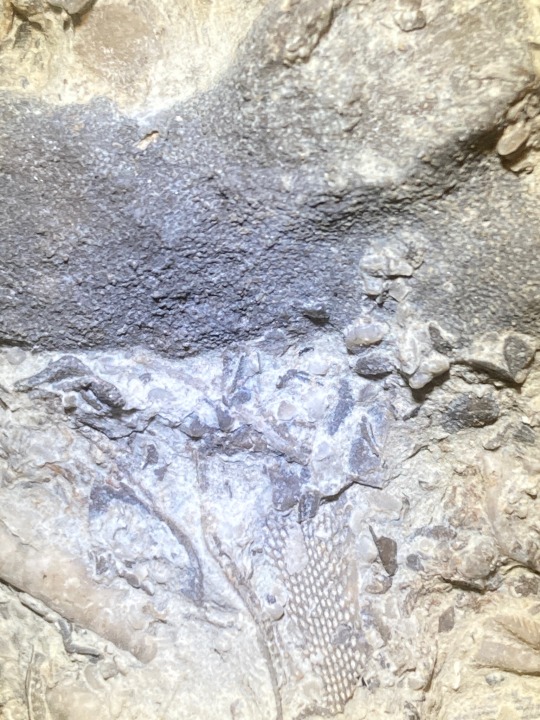


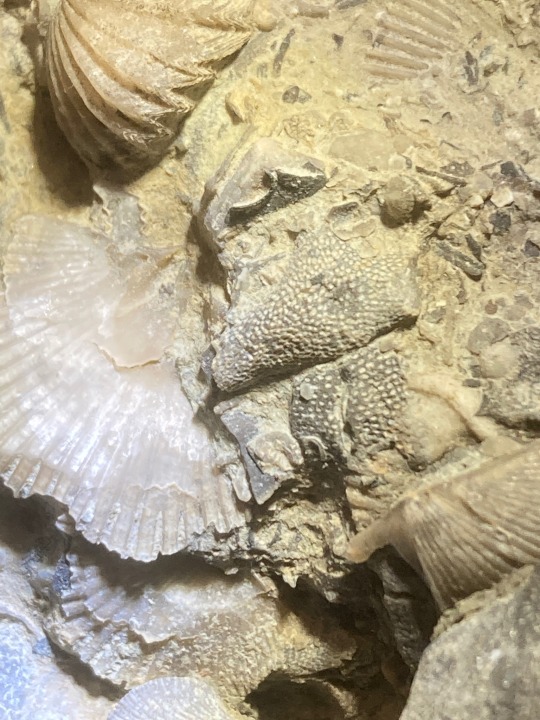



every couple of years i get too focused on concerta and go macro hunting on my favorite fossil find.
someday i will find a trilobite on this piece of 570 million year old equatorial seafloor. maybe just the tail, or maybe more. there is one here somewhere. like a limestone where’s waldo.
edit to add: collected in 2006 or 2007 at Lilydale Park fossil area. There’s some exposed fossils in southern MN too, but most of that is horn coral eroded loose from matrix.
most of what you find in lilydale is gray-buff-rust orange and deteriorated but this one is five pounds of blue deliciousness and the brachiopods have all turned to translucent white calcite. Look at those gorgeous zigzag growth lines! Magical.
28 notes
·
View notes
Note
Sometime when you have the energy, I'd love to hear your essay on the Cambrian Explosion and invention 👀
Yes!! Absolutely. It would be my delight.
So it’s the beginning of the Paleozoic era. What has it taken to get to this point? God has been busy, but it’s slow going. He's formed earth, moon, and oceans. The earth has a granite crust. Life has emerged under His careful hand: unimaginable numbers of molecular combinations have been thrown together across trillions of mineral surfaces over the course of many millions of years and yielded the first functional, crudely self-replicating molecular system, whether it was the citric acid cycle, or an autocatylitic network, or self-replicating RNA. And it worked. It began to propagate and evolve, and that invention has grown into cells, which formed endosymbiotic relationships, and now there are simple algaes and primitive sponges and biofilms. The beautiful, clever rubisco protein has emerged and pioneering cyanobacteria have used it to drive the Great Oxygenation Event. The earth’s surface has turned rust-red (like Mars), and along the edges of the continents green has begun to appear. Red against green against blue; the earth is poised.
God had patiently facilitated all of this slow, painstaking progress over the eons with an endpoint in mind. He’s nudged the right proteins together in the right places, caused the sun to shine and sustained those first primitive cells to survive long enough to reproduce, all with the full knowledge of where creation is going. He isn't in a hurry. Yet here, poised at the beginning of the Cambrian, I picture God rubbing His hands together in glee and saying to/within Himself, “Alright. Now for the fun part.”
Oxygen means that suddenly, there’s enough energy for animal life to thrive. An evolutionary arms race ensues, and here God’s inventiveness becomes wildly self-indulgent. He has laid a foundation. Now He plays. He invents predators and prey and he wraps them in hard armoured shells of larger and larger dimensions. He crafts bony plates and spines and sharp tails. Eyes begin to open and when they do, they see a world teeming with endless forms most beautiful. Creatures bite with teeth and scratch with claws.
The resulting creatures are strange-looking to the modern eye: Striated clams and delicate, fanlike bryozoa. Porous sponges and horn-shaped coral. Seven-eyed isoxys, three-foot almost-shrimp, and proto-arthropods with their long snoot-snoot noses. Trilobites, beautiful trilobites, leggy and wide-eyed and infinitely diverse. And somewhere, in the midst of all that beautiful, self-indulgent invention, God creates the first chordates.
Nearly all of the major animal phyla emerged during the Cambrian, of course, but the God of the Bible is ruthlessly focused on His greatest creation, the one that will bear His image. He’s building towards Homo sapiens, a creature that can glorify and enjoy Him forever, and so I think when those first chordates emerged, God must have rejoiced at His creation, the sound of “it is very good” reverberating recursively through eternity.
You see, for all the wild, self-indulgent playfulness of the Cambrian, God has always known what He is doing. He invented and He played and it was glorious, but in the fossils of those first chordates, I see Christ resurrected, and even further, the glorified bodies of every tribe, tongue, and nation, finally made perfect.
Where were you when I laid the foundation of the earth? Tell me, if you have understanding.
#thank you thank you thank you for this question#this is my favorite subject in case you couldn't tell#i will gush about God's evolutionary inventiveness all the live-long day#all truth is god's truth#ask me hard questions#pontifications and creations#endless forms most beautiful
20 notes
·
View notes
Text
We'll return to the Fire starter line soon, but before that, I'd like to take a moment to introduce:
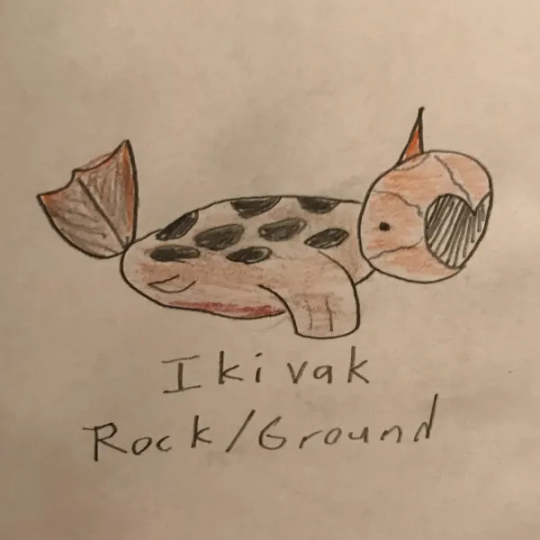
Ikivak - The Suction Pokémon! (#68)
Type: Rock/Ground Abilities: Earth Eater (Sand Veil) Height: 3' 3" / 1.0 m Weight: 69.4 lbs / 31.5 kg
Ikivak is a Fossil Pokémon, obtained by first retrieving and then reviving the Bristle Fossil at the Clefton Museum of Natural History (but be careful - Ikivak is exclusive to Pokémon Flint)! A Pokémon from prehistoric times, Ikivak roamed the Goodmorn region when it was mostly desert. Though it resembles a fish, scientists have suggested that it is, instead, a distant relative to lizards today.
Ikivak were solitary Pokémon and would propel themselves through the sand using their frontmost flippers with their mouth open and lower jaw in the sand. They would then suck in the sand, letting smaller ancient Bug-type Pokémon get caught in its grill, and the sand itself sucked through the grill and blown out of the many holes in its back. A single Ikivak can sift through up to 15,000 gallons (or 55,000 liters) of sand in a single day!
When it becomes strong enough, it becomes the mighty Vortitan. The corresponding fossil Pokémon exclusive to Pokémon Steel is Trilonyte, which you can read about here.
For a behind-the-scenes look at this Pokémon, read below!
So, Ohio has two state fossils. The first one is the official state fossil, and it's Isoltelus maximus, a type of giant trilobite that Trilonyte gets its inspiration from. The other is the official state fish fossil, which seems like a ridiculous thing for a state to have, but I digress, and that is the Dunkleoestus maximus.
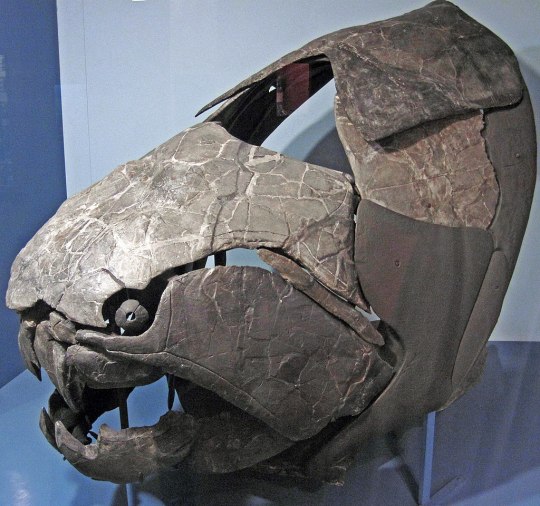
As badass as the dunkleoestus is, I think it's a little played out. First, there are dozens of people much more artistically inclined than me who have made dunkleoestus Pokémon, and second, the game already has that covered with Dracovish and Relicanth. I don't think that we need another rock-plated fish in the games.
So, I took things from a slightly different angle. Yes, the dunkleoestus is the state fish fossil, but there's also at the Clefton -sorry, Cleveland Museum of Natural History the fossil of a locally-discovered titanichthys.
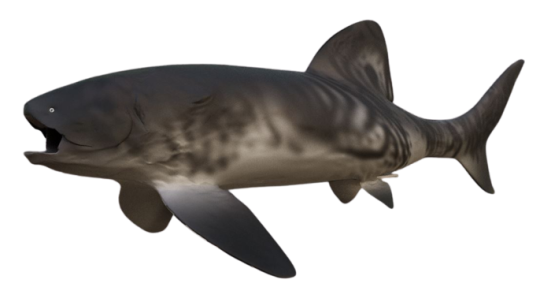
While it looks scary, it's nowhere near as fearsome as the dunkleoestus. These guys had big mouths, yes, but they were filter feeders, like whales. They would just swim around with their mouths wide open and let whatever was directly in front of it get sucked right on in. They didn't have a baleen, as far as I'm aware, but then, they didn't swim through sand either.
Below I've included some earlier drafts I made of this guy. On the left is my original drawing of them, which is a front on view that I'm not sure if I'm keen on. On the right is a version which gave them a pickaxe-like tail as a nod to their typing, but ultimately I went with something closer to my original design.
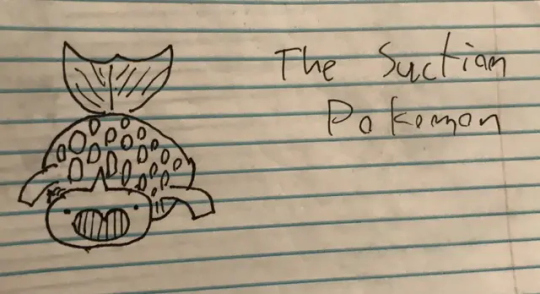
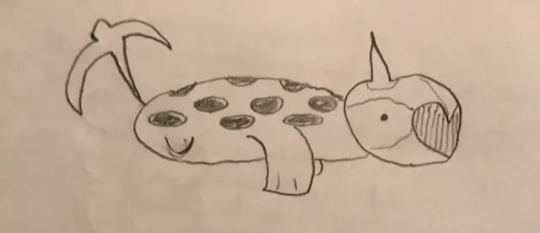
2 notes
·
View notes
Photo
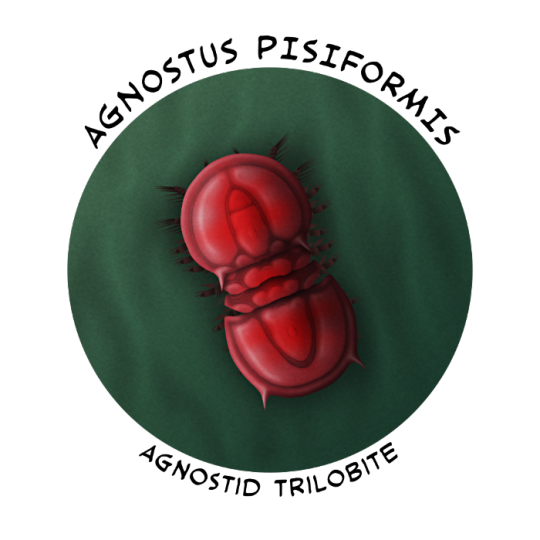
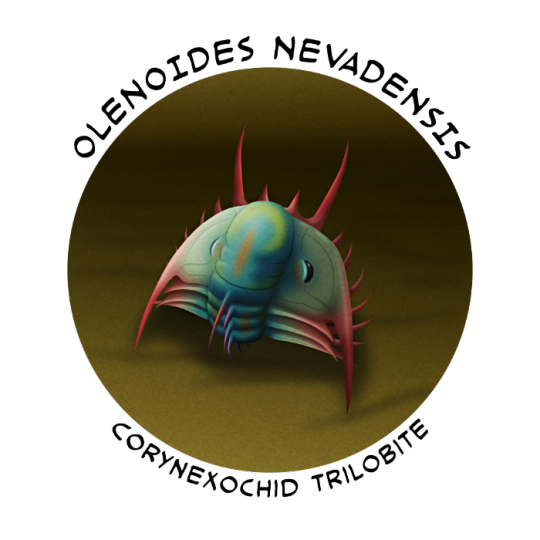
Cambrian Explosion #54: Trilobita – Transform and Roll Up
Most trilobites were able to roll themselves up into a protective ball – a behavior known as enrollment or volvation – exposing just their heavily armored backs to attackers. They're often found fossilized curled up like this, and rare preservation of soft tissues shows that they had a complex system of muscles to help them quickly achieve this pose while simultaneously tucking their antennae and all their limbs safely inside their enrolled shells.
Some species also developed sharp defensive spines and spikes that jutted out when they enrolled, making themselves even more daunting to potential predators in one of the earliest known examples of an evolutionary "arms race".
———
The agnostids were a group that first appeared in the early Cambrian very soon after the redlichiids and ptychopariids, and lasted until the end of the Ordovician about 444 million years ago. They probably evolved from some of the first ptychopariids*, and were highly specialized compared to other early trilobites, with large head and tail shields that usually looked almost identical, sometimes lacking eyes entirely, and only having two or three thorax segments – showing some convergent similarities to their nektaspid cousins.
( * There's been some debate about whether agnostids are actually trilobites, or whether they're closely related "trilobitomorph" artiopodans or even stem-crustaceans that just happened to somewhat resemble trilobites. This is due to soft-tissue preservation revealing limb anatomy that was very different from trilobites and looked more like the legs of crustaceans. But despite some other oddities, like having six pairs of head appendages instead of trilobites' usual four, the rest of their anatomy still places them firmly as artiopods, and as either trilobites or almost-trilobites.)
Found all around the world mainly in deeper-water environments, agnostids probably spent most of their time crawling around on the sea floor, but they may also have been able to swim in a semi-enrolled posture. They're also sometimes found preserved sheltering inside the empty hard parts of other animals, such as hyolith shells or Selkirkia tubes.
Some agnostid fossils have been found clustered in large numbers around the remains of other animals, suggesting they may have been opportunistic predators and scavengers, sometimes even cannibalising each other.
Agnostus pisiformis was a typical member of this group, known from the mid-to-late Cambrian (~506-492 million years ago) from sites including Sweden, Siberia, England, Wales, and Canada – widespread and common enough that it can be used as an index fossil to help date rock layers.
It grew to about 1cm long (0.4"), and while its front and back ends looked very similar the tail shield can be identified by a small pair of spines on its outer edge. Despite having only a couple of articulated body segments to work with it was capable of rolling up so its head and tail shield met and fully enclosed its body, forming a pea-sized protective capsule.
———
The corynexochids were another major group of trilobites to appear in the early Cambrian, descending from early redlichiids. They were one of the longest-lived trilobite lineages, lasting until the late Devonian about 376 million years ago, and often had large tail shields and spines adorning their bodies.
Olenoides nevadensis was a fairly rare species of corynexochid, known from the Wheeler Shale (~507 million years ago) and Marjum Formation (~505 million years ago) in Utah, USA
Up to about 5cm long (2"), it was very spiky for a Cambrian trilobite, with long "cheek" spines, pointy side lobes on its body segments, a row of spines along its back, and four pairs of spines on its tail shield. Like some other early trilobites it wouldn't have quite been able to roll into a tight ball, instead forming more of a "cylinder" – with its bristling spiny segments protecting its partially-exposed sides, and its tail shield lining up with its head to present an intimidating row of spikes.
———
Nix Illustration | Tumblr | Twitter | Patreon
#science illustration#paleontology#paleoart#palaeoblr#cambrian explosion#cambrian explosion 2021#rise of the arthropods#agnostus#agnostida#olenoides#corynexochida#trilobita#trilobite#artiopoda#euarthropoda#arthropod#panarthropoda#ecdysozoa#protostome#bilateria#eumetazoa#animalia#art#enrollment#volvation
132 notes
·
View notes